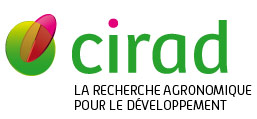Water for Forest: Potential impact of alternative land setaside programs at village and farm levels in the mountainous areas of Vietnam
Jourdain D., Boere E., Dan Dinh Quang, Van den Berg M., Cu Phuc Thanh, Do Anh Tai. 2010. In : International Symposium Sustainable Land Use and Rural Development in Mountainous Regions of Southeast Asia, Hanoi, Vietnam, 21-23 July, 2010. s.l. : s.n., 19 p.. International Symposium Sustainable Land Use and Rural Development in Mountainous Regions of Southeast Asia, 2010-07-21/2010-07-23, Hanoi (Viet Nam).
The uplands of Northern Vietnam, often having low agricultural productivity, are home to the poorest of the rural poor. The ecosystem services such as food production for marginalized populations, biodiversity reservoirs, and watershed regulating functions have been under increasing pressure due to decollectivisation and the following redistribution of the land, liberalization of the markets and a rapid population growth. To partly reverse these major changes we analyzed the impact of alternative schemes on farm revenues that would set aside cultivated land for forest natural re-growth. Instead of farmers receiving individual financial rewards, we explored the impact of improving collective infrastructures so that more water is made available for irrigation. Using mathematical programming a farm model was developed, in which we investigated scenarios where some land in the sloping area of the catchment is set aside for forest natural re-growth (which aims at restoration of watershed functions), while additional land is made irrigable in the lowland compartment of the farms. The impacts on land use, individual farm revenues, per head revenues and village revenues were analyzed. This led us to conclude that a reduction of cropped area in the sloping compartment, associated with a small increase in irrigable land in the lower compartment, had little impact on the aggregate village revenues. Moreover, under most scenarios, revenues were more equally distributed among households of a community. In fact, careful distribution of small quantities of irrigable land could be very beneficial to irrigation-poor farmers, while the revenues of the more well-off ones are almost not affected. However, this would require some coordination at village or commune levels, and a deliberate choice to help the poorly endowed households.
Documents associûˋs
Communication de congrû´s
Agents Cirad, auteurs de cette publication :
- Jourdain Damien — Es / UMR G-EAU
